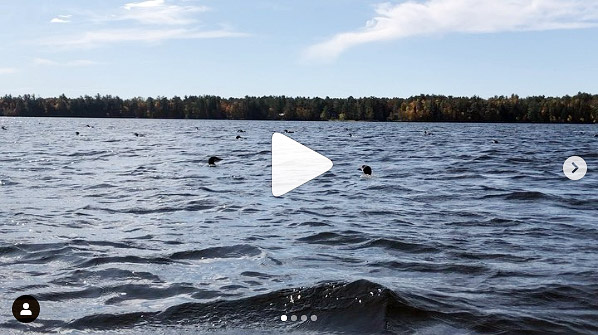
About the Common Loon
By: Lisa M. Genier - Adirondack Council Program Analyst
Friday, October 18, 2019
Loons. We all love them. We all get a thrill when we see a loon or hear their haunting cries. A bit of research further expanded my appreciation for these creatures I have enjoyed my entire life. Here’s what I learned about this great symbol of wilderness.
About Loons
There are five species of loons in North America: the Pacific Loon, the Arctic Loon, the Yellow-billed Loon, the Red-throated Loon, and the Common Loon (Gavia immer)….the one I talk about in this blog and the one that makes the Adirondack Park its summer home.
The Common Loon is a large bird, weighing between six to 14 pounds, and has an average wingspan of 41–52 inches. Their legs are situated way back on their bodies which helps them propel and swim easily underwater, but makes it difficult to walk on land. In fact, loons only go on land to mate and incubate their eggs.
Loons are great swimmers. They swim underwater to catch and eat their prey. Unlike other birds whose bones are air-filled (pneumatized), loons have dense bones. This extra weight helps them dive deep underwater…sometimes as deep as 250 feet to search for food. Loons can stay underwater for up to five minutes.
And what exactly do loons eat? Fish. Lots and lots of fish…about two pounds a day. Loons also eat invertebrates like crayfish and aquatic insects like dragonflies.
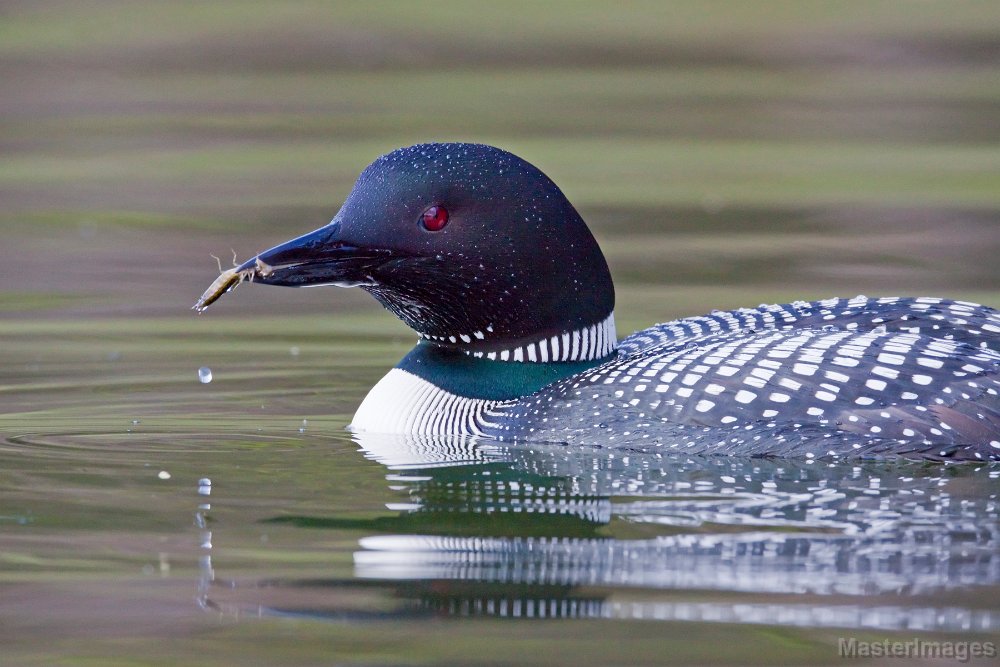
One might think that a bird that is such a good underwater swimmer may not fly very well. Not so. Loons move very well in the air too. They are strong flyers and can cover hundreds of miles in a straight flight. Loons can fly rather fast too. In fact, a migrating loon was tracked at 70 mph!
However, because of their weight and the unique positioning of their legs, loons can’t take off from land. Like an airplane, loons need a long runway, but one on the water, to help them take flight…30 yards or more. They flap their wings and run on the water until they reach lift-off. But once they’re airborne, the loon is a great flyer.
Breeding & Nesting Habits
In the spring and summer months, loons breed and raise their chicks in the Adirondack Park’s freshwater lakes and ponds. Usually, around May and early June, the loons begin nesting. They build their nest on the shoreline in anticipation of their forthcoming new family members. Generally, the female lays two, olive-green eggs with dark-brown spots about three inches long.
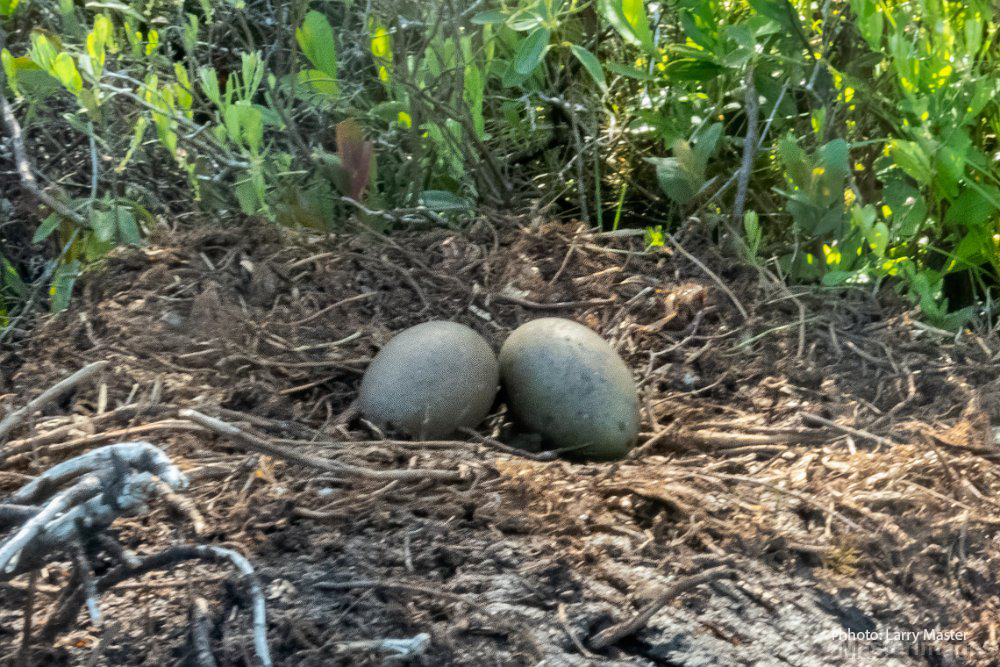
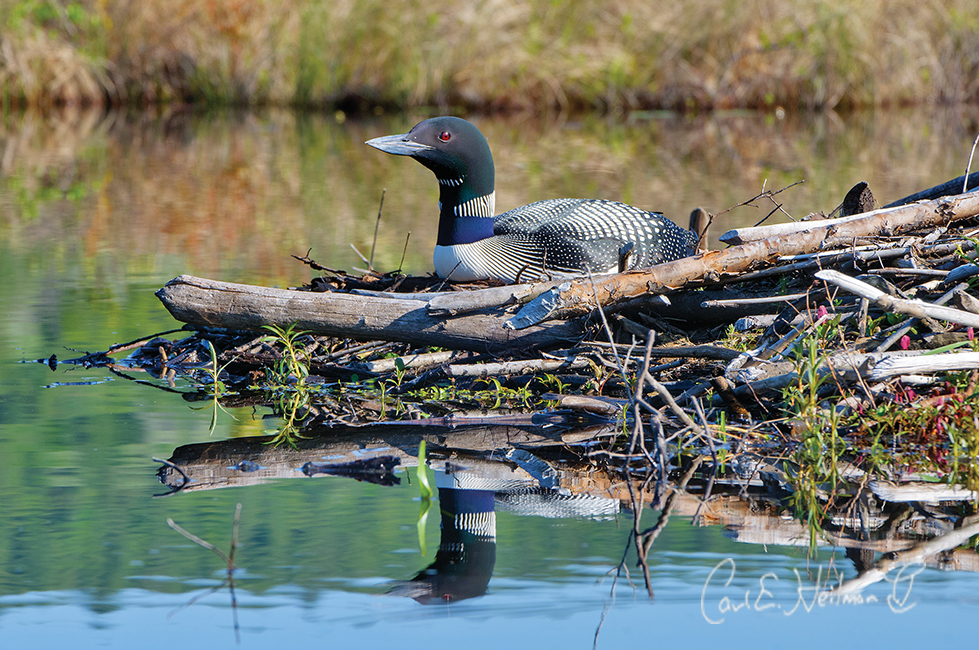
Both the male and female incubate the eggs, and in about a month (usually late-June to mid-August) loon chicks emerge. The fuzzy chicks leave the nest and go into the water within a couple of days.
Loon Chicks
For the first few weeks of their lives, the loon chicks are entirely dependent on their parents. The young chicks often ride around on their parent’s backs for protection and warmth.
The adults will feed the chicks insects and small fish until the chicks are able to make short dives and catch small fish on their own, in about three weeks. As the summer progresses, the chicks grow and are ready to fend for themselves at about three months.
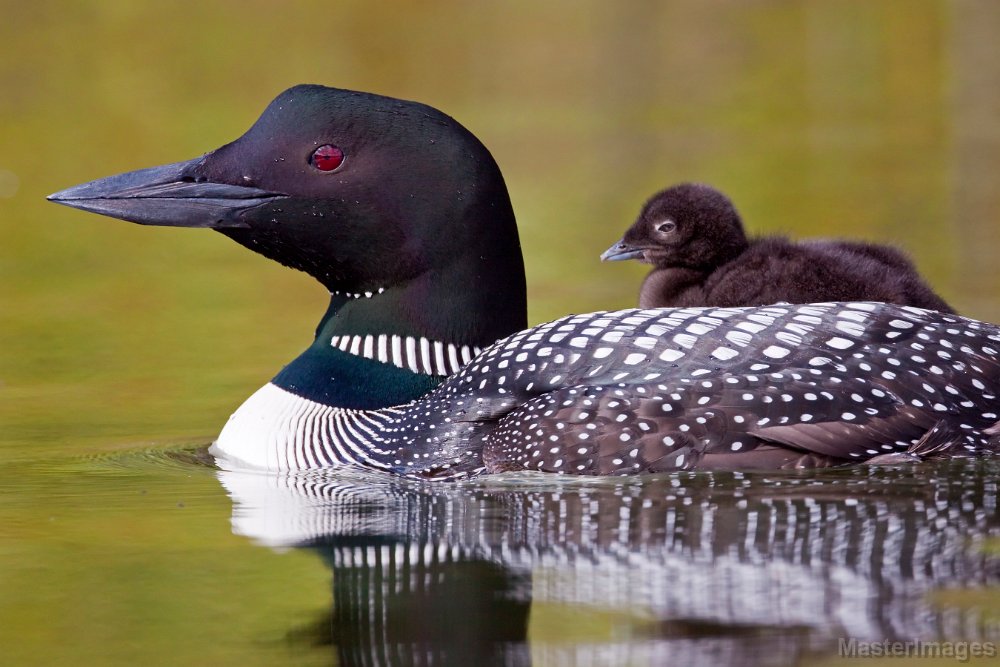
Loon Migration
In the late fall, loon parents leave the juveniles on the lake as they begin their migration southward to winter on the Atlantic coastline. The juveniles will migrate a few weeks after their parents, and once they reach the coast, the young loons stay there for two years. In the third year, they return north, but may not breed for several more years.
Before they make the flight south, loons "raft" or congregate on large, fish-heavy bodies of water in incredibly big groups. It is thought that they do this so they can feed more efficiently, and don’t have to fight off predators, or other loons from their feeding space.
Video: @matt_adams13 on Instagram
Studies have shown that Adirondack loons migrate to Cape Cod, Long Island, New Jersey, and even as far as North Carolina and the Gulf coast of Florida. It is likely that they return to the same area each year.
What do Loons do During the Winter?
As you can imagine, winter migration to the coast can take a toll on the loons. Not only do loons fly long distances, they have to get used to the change in their diet from freshwater prey to saltwater. Also, because loons now eat saltwater prey, they ingest large amounts of saltwater as well. The loons have to excrete that excess salt or they will die. So they have the ability to secrete the salt through glands near their eyes. Who knew?
Also, during the winter, adult loons experience a full body molt and lose all their feathers, including the feathers on their wings. They are unable to fly until their new feathers grow in, which takes about a month. This leaves them very vulnerable to prey.
Their eye color also changes with the seasons. In the summer adults have red eyes, but in the winter their eyes are brown.
Much like us, once the winter is over, loons can’t wait to get back to their favorite Adirondack pond or lake again! They usually return to the same water bodies year after year.
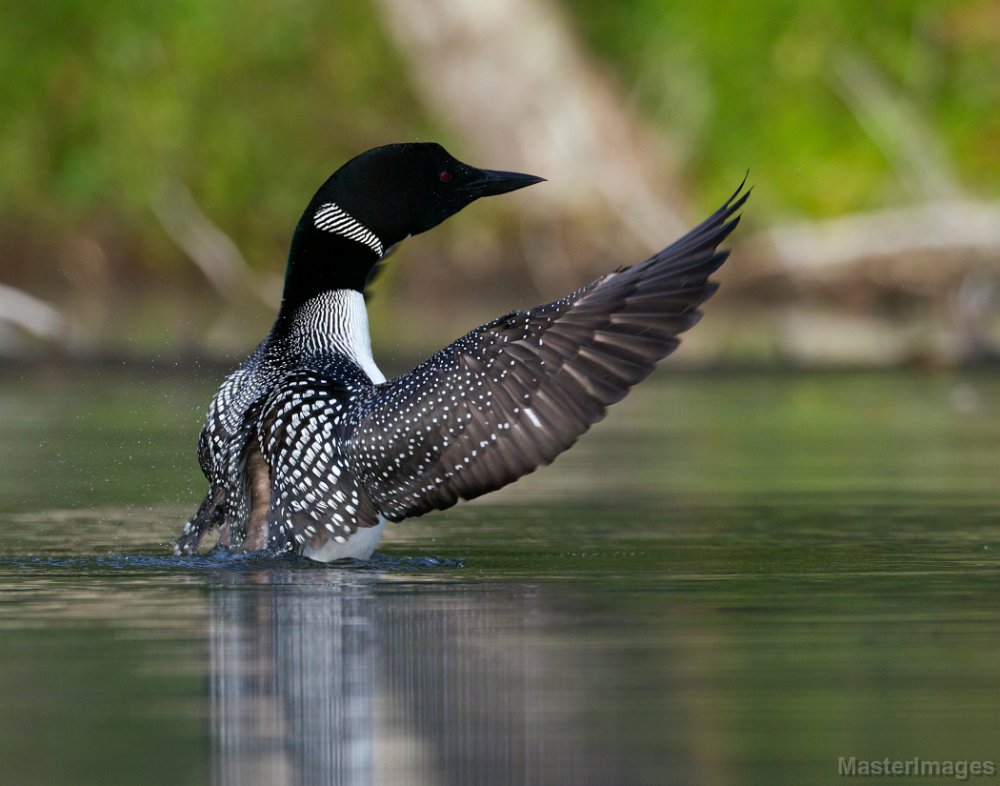
Loon Calls
And if you’re like me, one of my favorite things about sharing a pond with loons is hearing their awesome call. Yes, the call of the loon…so haunting, almost eerie. I'm sure you've noticed that loons have a few different vocalizations, but did you know they are for different reasons? One call is the tremolo, which a loon gives to announce its presence or when it is alarmed. Another call is the yodel, which is the male loon’s territorial call that is unique to every male loon. The wail is the call that loons give back and forth to figure out each other’s location. And, hoots are short calls given by family members to keep in contact with each other.
Threats to Adirondack Loon Populations
Just like other creatures, loons have predators that threaten their survival. Loon eggs are eaten by raccoons, otter, mink, gulls, crows, ravens, and eagles. Loon chicks are most often eaten by eagles, muskellunge, northern pike, and snapping turtles.
In addition, environmental pollutants, like acid rain and mercury, water quality issues, and shoreline development still threaten the loons’ long-term survival. Although great progress has been made that has allowed the Common Loon to again call the Adirondack their summer home, more needs to be done.
The Adirondack Council is dedicated to working to ensure the loon population will be able to grow so will continue to hear the haunting call of the loon for generations to come. Join us today and ensure the survival of loons by virtually "adopting" a loon.
Some Places to See Common Loons in the Adirondacks
- Adirondack Park Visitor Interpretive Center in Paul Smith's, Franklin County
- Adirondack Park Visitor Interpretive Center in Newcomb, Essex County
- Moose River Plains Wild Forest, Hamilton, and Herkimer County
- Stillwater Reservoir, Herkimer County
- William C. Whitney Wilderness Area, Hamilton County
Some of the information contained in this blog was found in: "Spirit of our Northern Water – the Common Loon" the NYS Conservationist
February 2012 - Biodiversity Research Institute’s Adirondack Center for Loon Conservation and Biodiversity Research Institute’s Forest Bird Program
 Lisa M. Genier joined the Council in 1992 working as its Legislative Associate in the Albany office. During her tenure, she played a role in the creation of the Environmental Protection Fund, which has been used to fund land purchases and environmental programs in the Adirondack Park and around the state. She was also a member of the negotiating teams that worked on re-licensing agreements for several hydroelectric facilities in the Park, which preserved thousands of acres of land, expanded recreational opportunities, and protected other natural resources. Lisa now works part-time as Program Analyst writing action alerts, interacting with members, managing the Council’s website, and serving in a consultative role on legislative and other issues
Lisa M. Genier joined the Council in 1992 working as its Legislative Associate in the Albany office. During her tenure, she played a role in the creation of the Environmental Protection Fund, which has been used to fund land purchases and environmental programs in the Adirondack Park and around the state. She was also a member of the negotiating teams that worked on re-licensing agreements for several hydroelectric facilities in the Park, which preserved thousands of acres of land, expanded recreational opportunities, and protected other natural resources. Lisa now works part-time as Program Analyst writing action alerts, interacting with members, managing the Council’s website, and serving in a consultative role on legislative and other issues

